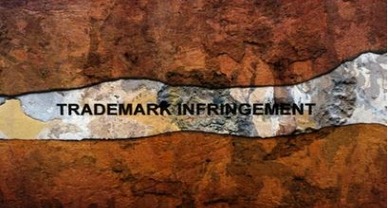“I Thought You Were Infringing My Mark” Can Apprehension Of Infringement Be A Cause Of Action?
Introduction
The Trade Marks Act, 1999 and the regulations made thereunder regulate trademark laws in India. The Act outlines the procedures for registering, safeguarding, and upholding trademarks in India. Trademarks are crucial for developing a company’s identity and act as a distinctive identifier of the products or services they provide. The owner’s brand reputation and goodwill may be irreparably damaged by any unlawful use of a trademark.
Trademark infringement is a breach of the exclusive rights of the trademark owner. Infringement of a trademark is a severe offence according to Indian trademark law. It is described as the unlawful use of a registered trademark by another person or business in a manner that is likely to mislead or confuse customers. Growing concern has been expressed recently over the suspicion of trademark infringement and whether it can give rise to legal action under Indian trademark law.
Cause of Action
A group of facts that give rise to a legal claim is known as a cause of action. When someone uses a mark that is identical to or confusingly similar to a registered trademark without the owner’s consent, trademark infringement occurs. The different behaviours that constitute trademark infringement are listed in Section 29 of the Act, including:
- Utilizing the trademark in connection with identical products or services to those for which it is registered.
- Where there is a chance of confusion, using a similar trademark for products or services that are the same as or similar to those for which the trademark is registered.
- using a trademark that is identical to or confusingly similar to a well-known trademark for any products or services where doing so would unfairly benefit from or harm the well-known brand’s reputation or distinctiveness.
Apprehension becomes Cause of Action
In situations of trademark infringement, the Indian trademark law offers both civil and criminal remedies. The civil remedy is in the form of an action for infringement of a trademark, while the criminal remedy is in the form of a complaint filed with the police or the magistrate. In all situations, the plaintiff must demonstrate that the defendant has used a mark that is identical to or confusingly similar to the plaintiff’s registered trademark, and that this use has caused confusion among the public or is likely to do so.
The plaintiff must establish that they were harmed or injured as a result of the defendant’s activities, which is one of the requirements of a cause of action. This harm or injury in the context of trademark infringement typically takes the shape of diminished goodwill, earnings, or reputation. Yet, it is unclear whether under Indian trademark law a mere suspicion of trademark infringement might potentially give rise to a cause of action.
[Image Resources : Shutterstock]
In Intel corporation v. Harpreet Singh & Ors., the Delhi High Court made the observation that it is unjust to expect the aggrieved party to wait for actual infringement to occur, particularly where fear of infringement is proven. “A stitch in time always saves nine and that is what is the essence of quia timet action.” Hence, a cause of action would arise even when there is mere apprehension of infringement. But such apprehension must be so strong and impending that it clearly signals potential future infringements. Nevertheless, this clause does not apply when an infringement case is filed under Section 134 of the Trademark Act of 1999.
Can mere apprehension confer jurisdiction?
It is obvious from the explanation above that a lawsuit can be started based on a mere suspicion of infringement. It is unclear, nevertheless, whether merely suspecting a violation gives the court jurisdiction.
The plaintiff might choose to start legal action for trademark infringement under section 134 of the Trademark Act or under section 20 of the CPC. A plaintiff may start legal action where they live or conduct business under Section 134 of the Trademark Act of 1999. In contrast, section 20 of the CPC grants jurisdiction over the location where the cause of action accrues.
In the case of Allied Blenders & Distillers Pvt. Ltd. v. Prag Distillery Pvt. Ltd. & Anr., When the plaintiff filed the lawsuit as a quia timet action, the Delhi High Court stated that, under section 20 of the CPC, jurisdiction is granted if there is an urgent fear that the defendant may infringe on the plaintiff’s trademark within the court’s jurisdiction. Similarly in the case of Pfizer Products, Inc v. Rajesh Chopra, the High Court of Delhi, while answering the question of territorial jurisdiction, observed that “threat of selling the offending goods in Delhi would in itself confer jurisdiction [to] the courts in Delhi to entertain a suit claiming an injunction in respect thereof. Whether the threat perception is justified or not is another matter.”
In prior judgements, the Delhi High Court’s reliance only on the possibility of infringement to bestow jurisdiction and not the degree of such apprehension is apparent. This strategy was eventually changed, and the Court started taking the level of concern or threat into account when determining jurisdiction. The reason for this is because if there is no significant fear of infringement, then no cause of action emerges.
In the case of Shree Nath Heritage Liquor Pvt. Ltd. & Anr v. Octaga Green Power & Sugar Co., neither the plaintiff nor the defendant resided or operated a business within the boundaries of the Delhi High Court’s geographical jurisdiction. The plaintiff’s case was founded on the mere suspicion of infringement, and they asserted that this is sufficient to provide jurisdiction under section 20 of the CPC since it may be regarded as a cause of action. After considering the level of apprehension, the Delhi High Court concluded that mere apprehension does not grant jurisdiction under section 20 of the CPC. The suspicion must be so strong and immediate that it is unmistakably indicative of future trademark infringement by the defendant. The court’s reasoning was centred around the case of Banyan Tree Holding Ltd. v. A. Murali Krishna Reddy, wherein the court stated “to prima facie prove that the Defendant wilfully availed of the jurisdiction of this court, the Plaintiff would have to show that the Defendant engaged in some economic activity in the forum State by directing its website exclusively at clients within that State.”.
Conclusion
In light of the aforementioned considerations, a simple apprehension of infringement, if proven, may potentially be sufficient to start legal action instead of actual trademark infringement. Yet, the required level of such apprehension is not clearly stated. In a trademark lawsuit, there are no clear-cut guidelines for determining whether evidence of impending risk qualifies. Simple signs like regulatory approvals or claims of clinical studies may not be sufficient to demonstrate the existence of a present hazard. Given the vital role that the internet plays in today’s marketing and sales, it is urgently necessary to fill in the gaps in the application of the quia timet action principle in order to deal with the realities of the time.
Author: Anish Jindal, A Student At Treasurer Centre for Study and Research in Intellectual Property Rights, NUSRL, in case of any queries please contact/write back to us at support@ipandlegalfilings.com or IP & Legal Filing.



